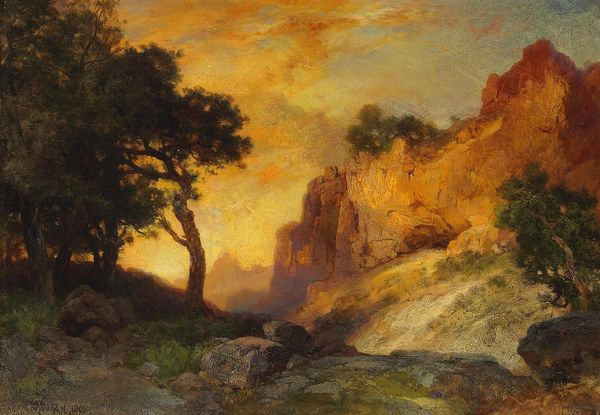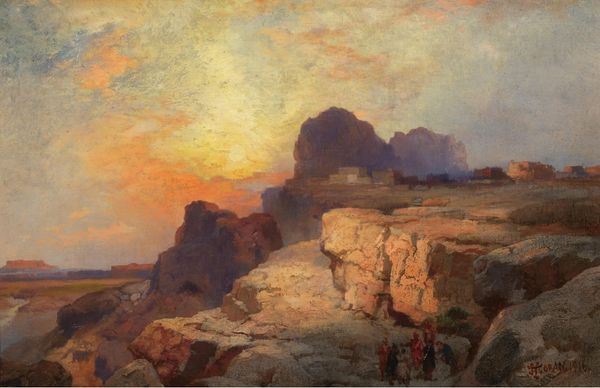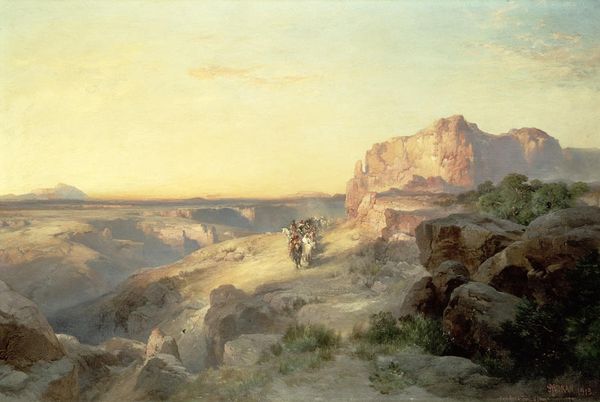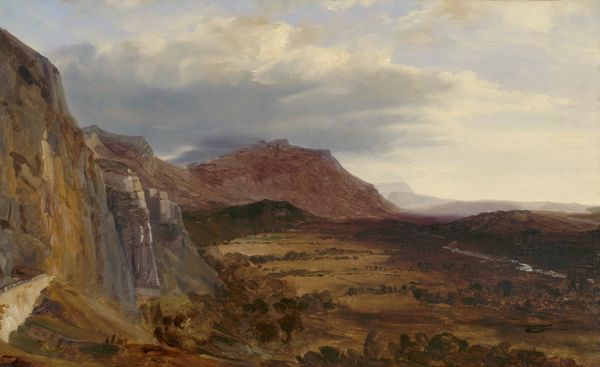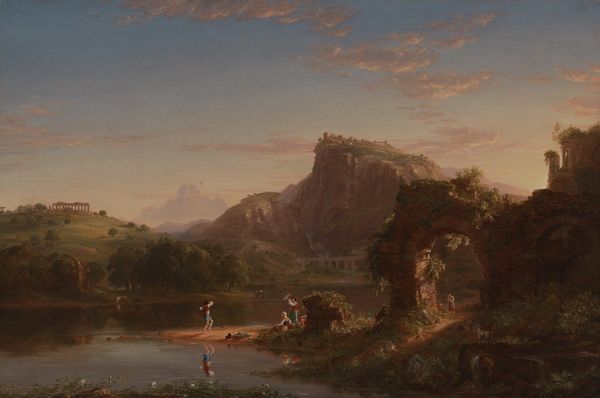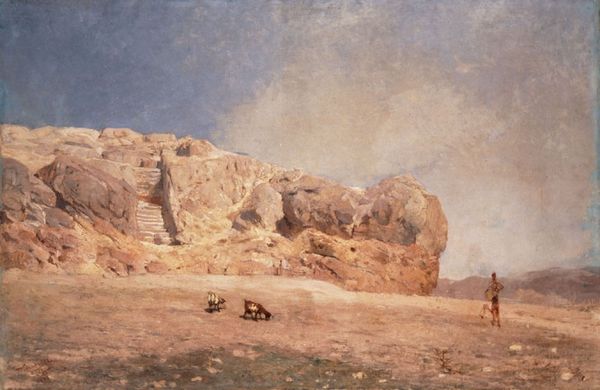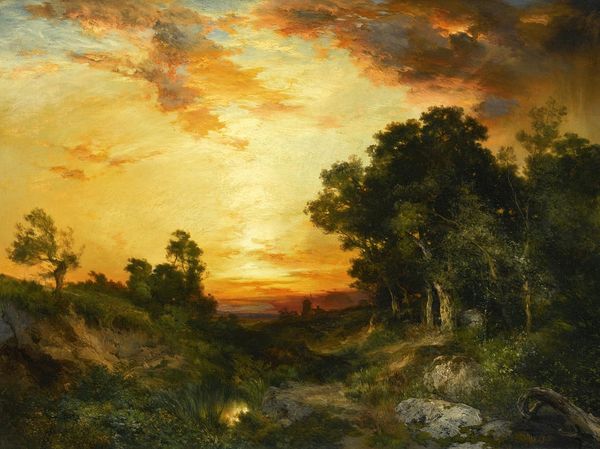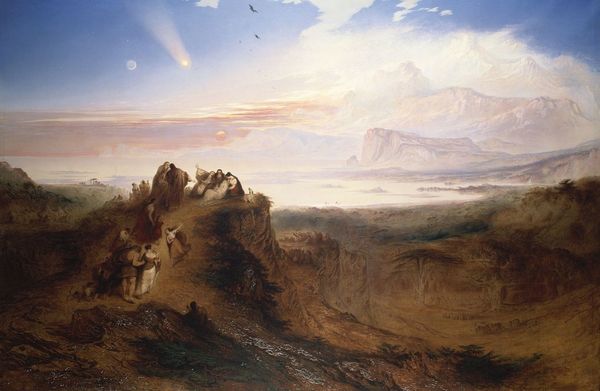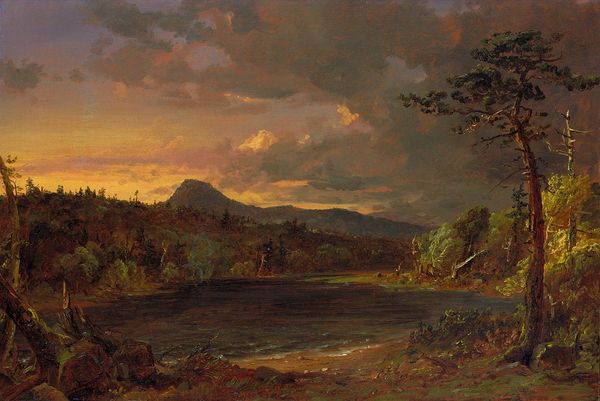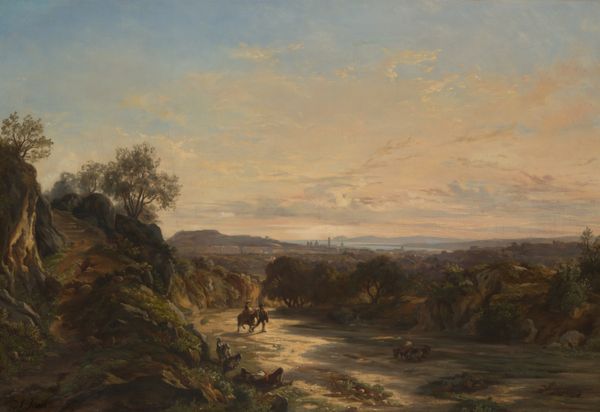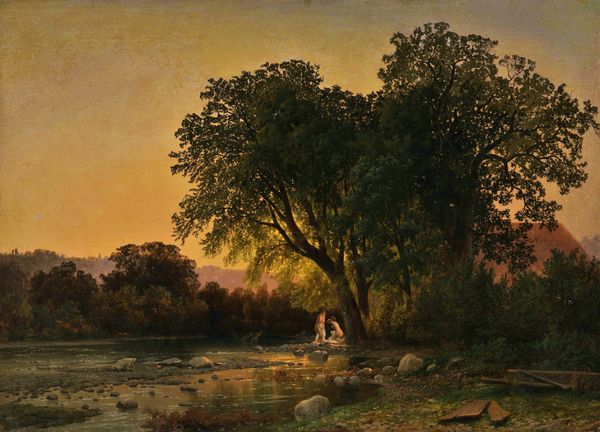
painting, oil-paint
#
painting
#
oil-paint
#
landscape
#
oil painting
#
romanticism
#
hudson-river-school
#
cityscape
#
realism
Copyright: Public domain
Thomas Moran painted this landscape, "A Water Pocket, Northern Arizona," likely in the late 19th century, using oil on canvas. At first glance, the painting is dominated by warm earth tones which evoke a sense of the arid American Southwest. Moran masterfully uses light to create depth and structure. Notice how the play of light and shadow across the rocks defines their shape and volume. This technique not only provides a sense of realism, but also engages with the sublime, a theme prevalent in 19th-century landscape painting. We could consider the painting's composition through a semiotic lens. The water pocket acts as a signifier of life and sustenance in an otherwise barren landscape. This creates a powerful visual metaphor, contrasting survival with the imposing, timeless presence of the desert. The placement of figures adds a layer of narrative, prompting us to ponder their relationship with the landscape. Ultimately, the painting's enduring appeal lies in its ability to evoke a sense of wonder and contemplation. The formal elements of light, color, and composition work together to create a space where we, as viewers, can reflect on our own place within the natural world.
Comments
No comments
Be the first to comment and join the conversation on the ultimate creative platform.
